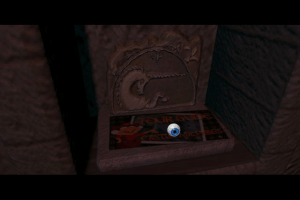

In The Golden Ass by Apulius (originally entitled The Metamorphoses, and a major contributor to this chapter), the speaker is transformed to an ass, and his concluding vision is of Isis, personification of the rainbow. (Again, McHugh records that the paragraph (.6-17) includes all seven colors.) Also as in “Circe,” different painterly effects can result: here, sometimes Rembrandt (.10), sometimes the Impressionists, sometimes Picasso or Picasso-like. “Rare lamps with faint rainbow fans” – refracting white fog into rainbow colors. The same effect is present in the foggy opening of “Circe,” with similarly prismatic results – e. That is, the sound is synchronized with and enhanced by what in “Calypso” is the “overtone” following the church bell’s ringing and what in “Sirens” is an “afterclang of Cowley’s chords.” “Afterclang”/“after-clang” was a term, current in the experimental psychology of the time, for such lingering reverberations coincidentally or not, a 1908 monograph on the subject reports that “the deeper fibers of the contra octave of the piano…produce their twelfth, yes even their fourteenth, partial tone as a most splendid after-clang of the tone.”Ĥ03.6: “White fogbow spans:” 1.
See next entry.Ĥ03.5: “And low stole o’er the stillness the heartbeats of sleep:” cessation of bell-ringing leaves a sensory vacuum that is filled by the sound of the subject’s heartbeat – in medical literature a standard example of normally subliminal noise, here, because cued by the similarly regular and repetitious bell-ringing, temporarily promoted above sensory threshold. Again, the sequence, as usual, is being processed through a specific sensory and perceptual apparatus, compromised and inconstant in its attentiveness, in this case of someone just waking up.

Overall, I suggest that things are set up to accommodate either ten, twelve, or fourteen strokes, either way. Apparently “(it can’t be)” and “(it must be),” whether thought or spoken, supersede the sound of the fifth and eleventh tollings. During the count-down/count-up, only ten numbers are registered. (But see 424.26 and note.) Still, the backward-counting here would seem to indicate something along that line.

Your annotator cannot discern either, or any of the others later on, and as McHugh notes elsewhere in his The Finnegans Wake Experience, it’s not clear whether Joyce was describing the course of III.1 or of all of III. Accordingly, the first few pages should somewhere register either the twelfth or fourteenth of the stations – Jesus’ death on the cross, or the body of Jesus being placed in the tomb. As for the count-down: in Joyce’s description, recorded in McHugh, the chronology, signaled by the fourteen stations of the cross, is backwards. “Foify tray” sounds like forty-three or four-two (twain) and is followed (after parenthetical aside) by a word which begins with “tw-“ and reads numerically as 12, perhaps raising the possibility that the hearer, whose interpretations and interjections complicate matters throughout, ear-skipped, in his count-down sequence, the numbers two and one, in order to accommodate the “twelve” of his count-up sequence. For instance, the count adds up to twelve syllables by itself, fourteen if “Hark!” and “Hork!” are included, twenty if the parenthetical comments are factored in. As to be expected, there are complications. Simultaneously/alternately forwards and backwards, from one to twelve, from twelve to one. Pedwar pemp foify tray (it must be) twelve:”ġ. Tolv two elf kater ten (it can’t be) sax.


 0 kommentar(er)
0 kommentar(er)
